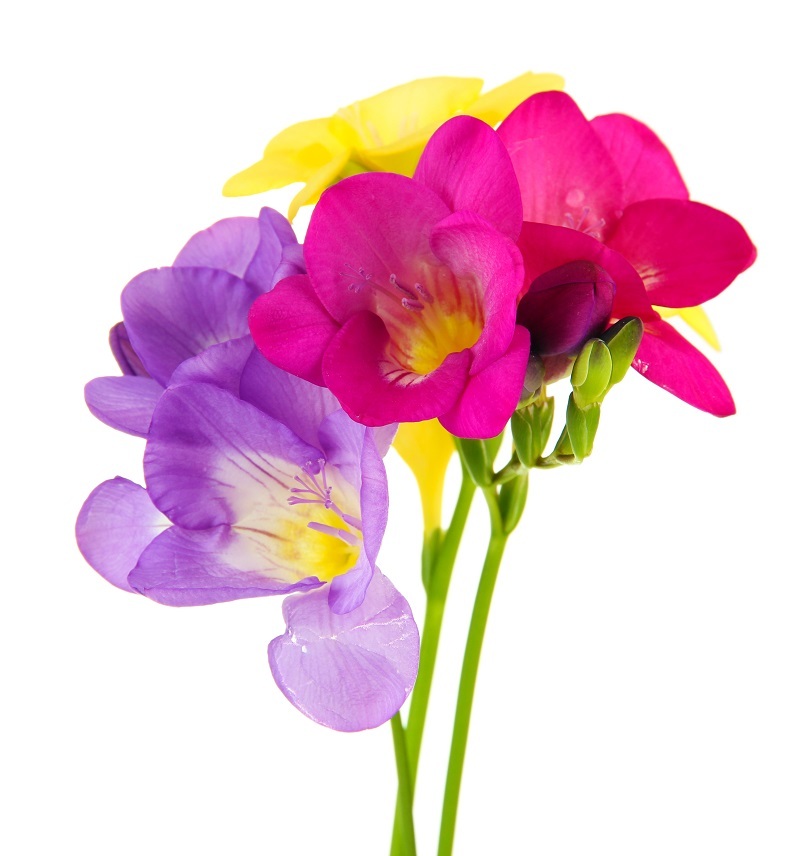Discover the meanings of your birth month blooms
Posted on 17/08/2025
Discover the Meanings of Your Birth Month Blooms
Are you curious about the secret language of flowers and how your birth month might connect you to a specific blossom? From ancient times to modern days, flowers have been cherished for their remarkable beauty, captivating fragrances, and, importantly, their rich symbolism. Each month of the year is associated with a unique flower, each carrying its own hidden message and sentimental value. Discovering the meaning behind your birth month bloom can add a beautiful layer of significance to your personal story.

What Are Birth Month Flowers?
Birth month flowers are similar to birthstones, signifying the month you were born with a special significance. These blooms are steeped in tradition and meaning, acting as a personalized symbol that reflects aspects of personality traits, wishes, and fortune. Whether as a thoughtful gift, a special decoration, or a personal talisman, knowing your birth month flower meaning can help you connect with nature and heritage in a unique way.
The Tradition of Floral Symbolism
The use of flowers to convey emotions and messages dates back centuries. From the Victorians, who perfected the art known as floriography, to various mythologies and cultures, blooms have served as silent messengers. Learning about the meanings of your birth month blooms offers insight into yourself and your relationships, enhancing special occasions such as birthdays and anniversaries.
The List of Birth Month Flowers & Their Meanings
Let's take an in-depth journey through the calendar year, uncovering the flowers associated with each month and their hidden meanings.
January - Carnation & Snowdrop
- Carnation: The carnation is revered for its lovely ruffled petals and range of vibrant hues. Traditionally, carnation signifies love, admiration, and distinction. The pink carnation is especially symbolic of a mother's love.
- Snowdrop: This delicate winter bloom represents hope, purity, and renewal, making it perfect for the start of the year.
Giving a carnation or snowdrop in January sends a message of admiration, best wishes, and optimism for the year ahead.
February - Violet & Primrose
- Violet: Symbolizing modesty, faithfulness, and virtue, violets are dainty but vibrant flowers, ideal for the month of love.
- Primrose: This bloom stands for young love, suggesting "I can't live without you."
A bouquet including these February birth month flowers is a fragrant promise of enduring affection.
March - Daffodil
- The bright, sunlit daffodil brings a ray of hope as winter fades. Its meaning centers around rebirth, new beginnings, and personal growth. Daffodils encourage optimism and joy, making them a beautiful celebration of March birthdays.
April - Daisy & Sweet Pea
- Daisy: Symbolizes innocence, purity, and true love. In folklore, it also stands for new adventures and loyal friendship.
- Sweet Pea: Represents blissful pleasure and is often given in gratitude for a wonderful time shared.
Receiving daisies and sweet peas suggests a wish for happiness and enduring bonds.
May - Lily of the Valley & Hawthorn
- Lily of the Valley: These fragrant white blooms are emblems of humility, happiness, and the return of joy. Associated with purity, they are particularly featured in springtime celebrations and royal weddings.
- Hawthorn: Symbolizes hope and supreme happiness, often found in May's blossoming hedgrows.
June - Rose & Honeysuckle
- Rose: Perhaps the world's most adored flower, the rose embodies love, honor, and beauty. Each rose color conveys a different meaning--red for love, yellow for friendship, and white for purity.
- Honeysuckle: Stands for devotion, happiness, and the bonds of love.
Choosing a birth month bloom for June means offering a symbol of sincere affection and deep connection.
July - Larkspur & Water Lily
- Larkspur: Signals positivity, dignity, and lightness of heart--its vibrant colors evoke feelings of celebration and openness.
- Water Lily: Represents purity, peace, and the promise of new beginnings.
August - Gladiolus & Poppy
- Gladiolus: Known for their tall, striking spikes, gladiolus bloom with meanings of strength, sincerity, and moral integrity.
- Poppy: Represents imagination, remembrance, and consolation.
September - Aster & Morning Glory
- Aster: With star-shaped blooms, asters symbolize love, wisdom, and faith. They are often considered talismans for patience and elegance.
- Morning Glory: Stands for affection, tenacity, and renewed energy.
October - Marigold & Cosmos
- Marigold: Renowned for vibrant oranges and golds, the marigold or "herb of the sun" means passion, creativity, and positive energy.
- Cosmos: Represents peace, order, and balance in life.
November - Chrysanthemum
- The only birth flower for November, chrysanthemums (or "mums") stand for happiness, longevity, and grateful hearts. Different colors express distinct meanings: red for love, yellow for neglected love, and white for truth.
December - Narcissus & Holly
- Narcissus (Paperwhite): This elegant winter flower symbolizes hope, respect, and the celebration of renewal.
- Holly: A festive holiday plant, holly stands for protection and domestic happiness.
How to Celebrate with Your Birth Month Flower
Learning the meanings of your birth month blooms unlocks creative and heartfelt ways to commemorate birthdays and milestones:
- Personalized Gifts: Send a bouquet featuring your recipient's birth flower for a truly meaningful birthday present.
- Birth Flower Jewelry: Choose jewelry engraved or decorated with the month's flower, serving as an elegant reminder year-round.
- Home Decor Accents: Incorporate prints, dried blooms, or fresh arrangements of your birth month flower throughout your living space.
- Symbolic Tattoos: Many opt for delicate tattoos featuring their birth flower to carry personal meaning wherever they go.
- Garden Inspiration: Plant your birth bloom in your garden to mark the cyclical beauty and memory of your birth month.

Birth Month Flower FAQs
Can I Have More Than One Birth Flower?
Yes! Several months, such as January, February, and April, have multiple flowers associated. If your birth date falls between calendar transitions of these flowers, you can enjoy the meanings of both!
Do Birth Flowers Work Like Zodiac Signs?
Not exactly. While zodiac signs are based on celestial positions at your birth, birth month blooms trace their origin to folklore and seasonal blooming cycles. They are about symbolic connection rather than astrology.
How Do I Learn More About My Flower's Historical Meaning?
Research into the history and lore of your birth month flower can reveal fascinating symbolism in ancient traditions and art. Victorian flower books and online resources offer deeper insights into your specific bloom.
Conclusion: Embrace the Beauty and Meaning of Birth Month Blooms
The tradition of birth month flowers offers a beautiful way to express personality, values, and sentiments through nature's artistry. Whether you're seeking the hidden meaning of your own bloom or searching for a thoughtful birthday gift, understanding the origin and symbolism behind these flowers brings a personal touch to life's celebrations.
Your birth month bloom is much more than a flower--it's a living symbol of love, life, and the legacy of botanical language. Let it inspire your next special occasion, and cultivate new meanings as you grow along with the seasons.
Embrace your story through the language of flowers. Discover your birth month flower and let it blossom in your heart and home!
Latest Posts
Discover the meanings of your birth month blooms
Unravel the Secrets of Your Birth Flower and Its Remarkable Insights
Your Ultimate Guide to Hydrangea Maintenance
Exploring the deep symbolism and vibrant colors of Peony flowers
Unveiling the 5 Most Beloved Flowers for Valentine's Celebrations





